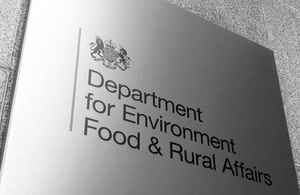Record numbers of 18-year-olds take up their place at university
Nearly 180,000 18-year-old students in England have had their place at their first choice of university confirmed. This is the largest number ever on record for an examination year, a 20% increase on 2019, when exams were last sat.
Overall, 425,830 students of all ages and domiciles will be going onto university, including a record number of 18-year-olds from a disadvantaged background for an examination year. The gap between the most and least advantaged progressing to university has narrowed to a record low (from 2.29 in 2019 to 2.26 in 2022, and from 2.32 in 2021).
The first cohort of T level students received their results today, with over 92% achieving a pass or above. Many have already secured their first job or an apprenticeship in areas like mechanics and digital product design, and 370 students, 71% of those who applied, have so far been placed onto a university course, demonstrating the flexibility and appeal of these courses.
This is the first year that students have taken summer exams since 2019. As part of the Ofqual transition period back to pre-pandemic grades, AS, A level and Vocational and Technical Qualification results received today will be higher than in 2019 in recognition of the disruption students experienced during their exam years.
Exams were taken with support and adaptions in place, including advance information of topics for A levels, and longer assessment windows for vocational and technical qualifications.
Grades will be lower than 2021 when exams did not go ahead and grades were determined by teachers, as schools and colleges remained closed to most pupils until March.
36% of entries for A levels are at grade A or above in the UK – up from 25% in 2019, and down from 45% in 2021, reflecting the target set out last autumn.
Statistics published today also show:
- 83% of entries for A levels are at grade C or above – up from 76% in 2019, and down from 89% in 2021, reflecting the target set out last autumn.
- The gap between the proportion of top grades (A*, A and above and B and above) in independent schools and academies in England has narrowed compared to 2021.
- 92.2% of T Level students in receipt of results this year achieved a Pass or above, with 31.9% achieving a Distinction and 2.7% a Distinction*.
- Over 240,000 certificates awarded to a wide range of students who have undertaken Level 3 vocational and technical qualifications used for progression in a similar way to A levels, with results broadly similar to previous years.
- 87.7% of undergraduates for this year at UK universities are from the UK compared to 12.3% of international students. This compares to 14.7% of international students in 2019.
Education Secretary James Cleverly said:
I want to congratulate students getting their results today and say a big thank you to the teachers who helped them get to this point. These students have experienced unprecedented disruption over the last couple of years, and such excellent results are a testament to their resilience and hard work.
Our plan this year was to ensure that students could sit their exams for the first time since 2019, be graded fairly and move on to the next stage of their lives as we return to normality after the pandemic.
We have now seen the largest number of students on record for an examination year – including a record 23,220 of disadvantaged 18-year-olds – going on to university, while many others will take their next steps in further training or the world of work.
Regardless of what those next steps are, I wish all students the very best on this exciting new chapter in their lives.
179,690 18-year-olds in England gained their first choice of university place, 21,670 their insurance. This compares to 149,670 getting their firm choice and 19,300 getting their insurance choice in 2019.
The government has been working with the higher education sector to ensure that universities have been making offers that reflect the grades students have received today.
Universities have been encouraged to be flexible in their decision-making on admissions for students who narrowly miss their grades or terms of their offer and they have a wealth of experience supporting young people throughout the application process, including through the changing circumstances with recent results cycles.
Medicine and Dentistry are hugely competitive courses, and consistently have far more applicants than there are places available. Despite more cautious offer making this year so universities can avoid oversubscription, the government expects all places on these courses to be filled for 2022/23.
For those students going onto higher education in September from the lowest-income households, on top of the standard cost of living support package, the government has continued to increase support for living costs on an annual basis. This means that these students now have access to the largest ever amounts in cash terms. The government also asked the Office for Students to protect the £256 million available to support disadvantaged students and those in the need for the current financial year.
If students have not received the grades they were hoping for, a record number of places are available through UCAS, as well as a range of high quality vocational and technical options. Students can call the National Careers Service on 0800 100 900 for advice on their next steps.
To help future students recover from the impact of the pandemic the government has invested nearly £5 billion including £1.5 billion for the National Tutoring Programme. Over two million courses have now started through the National Tutoring Programme, including 1.8 million so far this academic year across an estimated 80% of schools.
The Department for Education and Ofqual will evaluate the arrangements this year, before finalising 2023 arrangements as early as possible in autumn. The intention is to return to the carefully designed and well-established pre-pandemic exam arrangements as quickly as possible, given they are the best and fairest way of assessing what students know and can do.
Unless otherwise stated all figures refer to England domicile.



